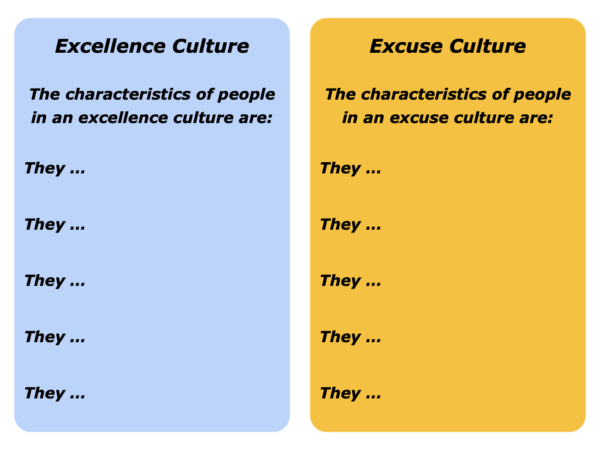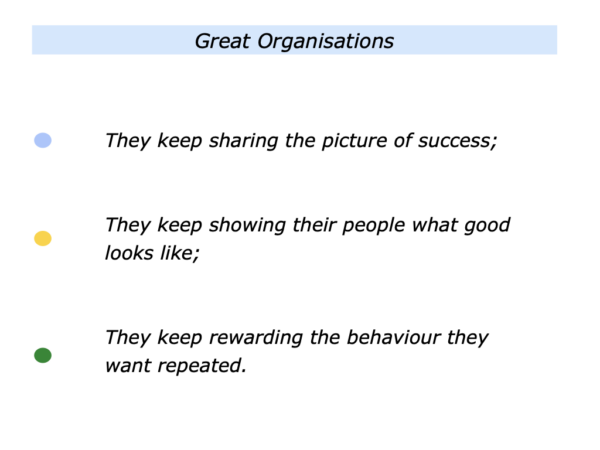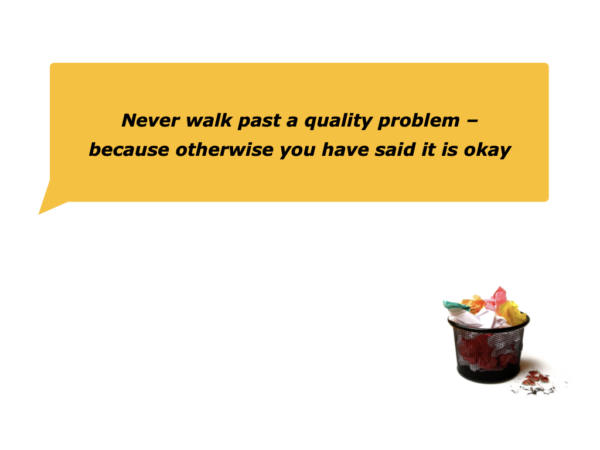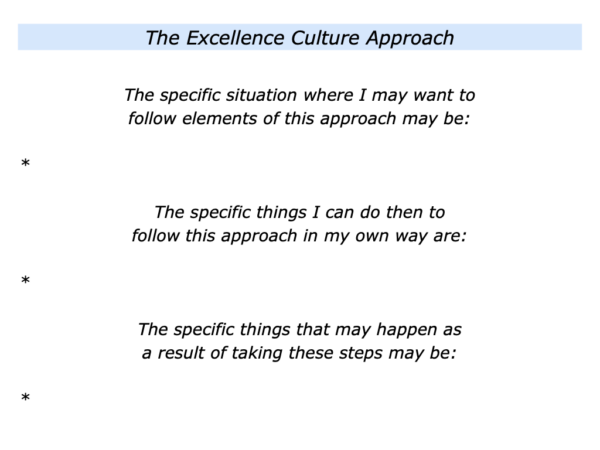
When have you encountered an excellence culture rather than an excuse culture? You may have visited a sports team, hospital, company or another organisation where people continually delivered high standards.
What did people do to create such a culture? How did they keep reminding people of what good looked like? How did they deal with any quality problems? Let’s explore how it is possible to make this happen.
Many years ago I encountered two extreme cultures during the course of a week. The first culture exuded excellence.
The pathway to the building was clean and attractive. The reception people had been told I was arriving and had a badge ready. They provided coffee and fruit for visitors in the reception area where customer success stories were displayed on the walls.
Watching the employees arrive, they appeared friendly and wanting to work. The whole environment buzzed with a sense of energy. People took responsibility for maintaining the high standards.
The Chief Executive came to collect me rather than sending somebody else. Building on my comments about the reception area, she explained the company wanted the visitors to go away saying:
“That is the best reception area I have ever visited. It exemplified what the company aims to do each day. I wish my company’s reception area could be like that.”

The second company I visited was much less inspiring. The grounds outside the main entrance were littered with cigarette butts, chewing gum and empty cans in the hedges.
The reception area was grubby and staffed by uninterested people from a security company. The meeting rooms were dark, had faulty window blinds and had packages stacked in the corners.
The company was grey. There were few signs of energy or love for the work. People failed to take responsibility for improving the standards. I left wondering how people got through each day.
Looking at your own experience, what do you think are the characteristics of an excellence culture? What are the values that people believe in? How do people translate these values into action? How do they actually behave?
Looking at the other extreme, what do you think are the characteristics of an excuse culture? How do people behave in such a culture? What happens as a result?
Good leaders reward the behaviour they want repeated. They also never walk past a quality problem – otherwise they have said it is okay.

A Managing Director taught me about this when I was due to meet him. Sitting in the reception area of his company’s offices, I saw him park his car and begin walking toward the main entrance.
Suddenly he dived into the hedge and emerged with an empty drinks can. It was 7.30 in the morning and the can had obviously been thrown from the nearby main street during the night. The MD explained his approach in the following way.
“I refuse to walk past a quality problem. If we don’t keep our hedges and car parks clean, visitors will think we don’t pay attention to our products.”
This approach also applies to dealing with people who display poor professional standards. Here is one example.
Imagine the scene. It is 9.30 on a Monday morning and one team member arrives 30 minutes late for a 9.00 meeting at the office. He then says the following things to the rest of the staff.
“What a terrible day. The trains are late and later I am due to meet the client from hell. What a way to begin Monday.”
What to do about such an entrance? You can ignore the person, confront them or adopt some other approach.
I witnessed such an incident when the leader asked the team member who arrived late to leave the room. He said:
“I wonder if you can replay that situation. Everybody has found it hard to get into work today, but we want to get on with the job.
“I would like you to go out, then come in again. This time, think about the impression you are giving to people in the office.
“I don’t want you to come in with a forced smile, but I do want you to think about the tone you are setting on a Monday morning. Do you want to try it? It’s up to you.”
That approach sounds heavy, but it actually worked. The team member smiled wryly, accepted the message and said:
“Sorry.”
They left the room and came in again 30 seconds later with a totally different attitude. The leader was not looking for clones, far from it, but he did want people who behaved professionally.
You will have your own way of never walking past a quality problem. This can be easy when it applies to physical products or customer service. But it can be harder with human behaviour.
People must get the message that certain actions are encouraged, however, whilst others are unacceptable. Corporate misdemeanours can often be traced back to ignoring people who behaved badly.
Good organisations encourage the people who take responsibility and deliver the required professional standards. They do not dilute their principles for those who do not want to fulfil the agreed contracts. It is about maintaining consistently high standards rather than being chaotic.
Imagine that you aim to build an excellence culture. You may wish to do this in a school, sports team, organisation or wherever. How can you do your best to make this happen?
If you wish, try tackling the exercise on this theme. This invites you to complete the following sentences.



Leave a Reply